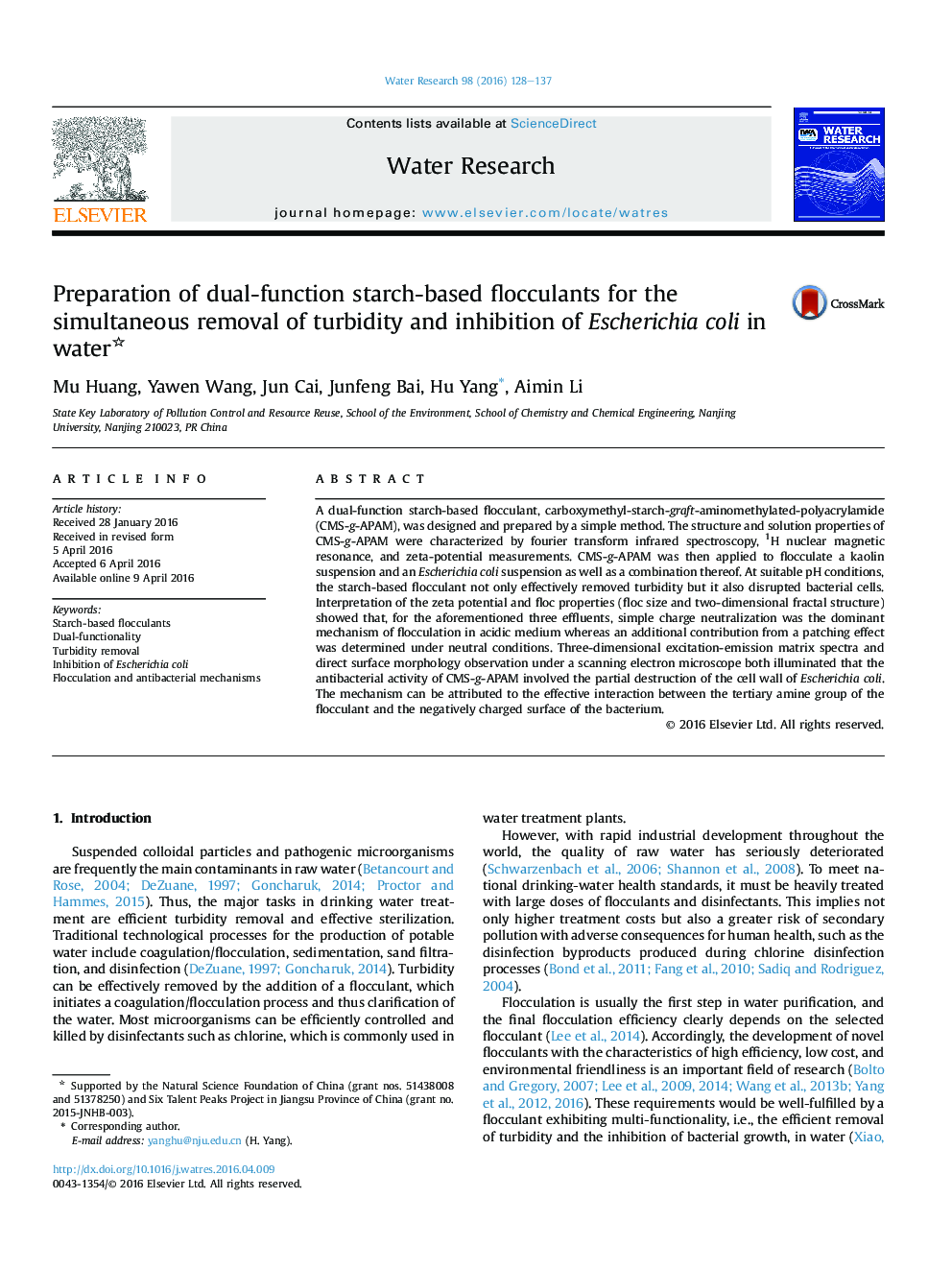| کد مقاله | کد نشریه | سال انتشار | مقاله انگلیسی | نسخه تمام متن |
|---|---|---|---|---|
| 4480977 | 1623070 | 2016 | 10 صفحه PDF | دانلود رایگان |

• A dual-function starch-based flocculant (CMS-g-APAM) was designed and prepared.
• CMS-g-APAM can simultaneously remove turbidity and inhibit Escherichia coli in water.
• Simple charge neutralization is the dominant mechanism of flocculation.
• CMS-g-APAM can partially destruct the cell wall of E. coli.
A dual-function starch-based flocculant, carboxymethyl-starch-graft-aminomethylated-polyacrylamide (CMS-g-APAM), was designed and prepared by a simple method. The structure and solution properties of CMS-g-APAM were characterized by fourier transform infrared spectroscopy, 1H nuclear magnetic resonance, and zeta-potential measurements. CMS-g-APAM was then applied to flocculate a kaolin suspension and an Escherichia coli suspension as well as a combination thereof. At suitable pH conditions, the starch-based flocculant not only effectively removed turbidity but it also disrupted bacterial cells. Interpretation of the zeta potential and floc properties (floc size and two-dimensional fractal structure) showed that, for the aforementioned three effluents, simple charge neutralization was the dominant mechanism of flocculation in acidic medium whereas an additional contribution from a patching effect was determined under neutral conditions. Three-dimensional excitation-emission matrix spectra and direct surface morphology observation under a scanning electron microscope both illuminated that the antibacterial activity of CMS-g-APAM involved the partial destruction of the cell wall of Escherichia coli. The mechanism can be attributed to the effective interaction between the tertiary amine group of the flocculant and the negatively charged surface of the bacterium.
Figure optionsDownload high-quality image (203 K)Download as PowerPoint slide
Journal: Water Research - Volume 98, 1 July 2016, Pages 128–137